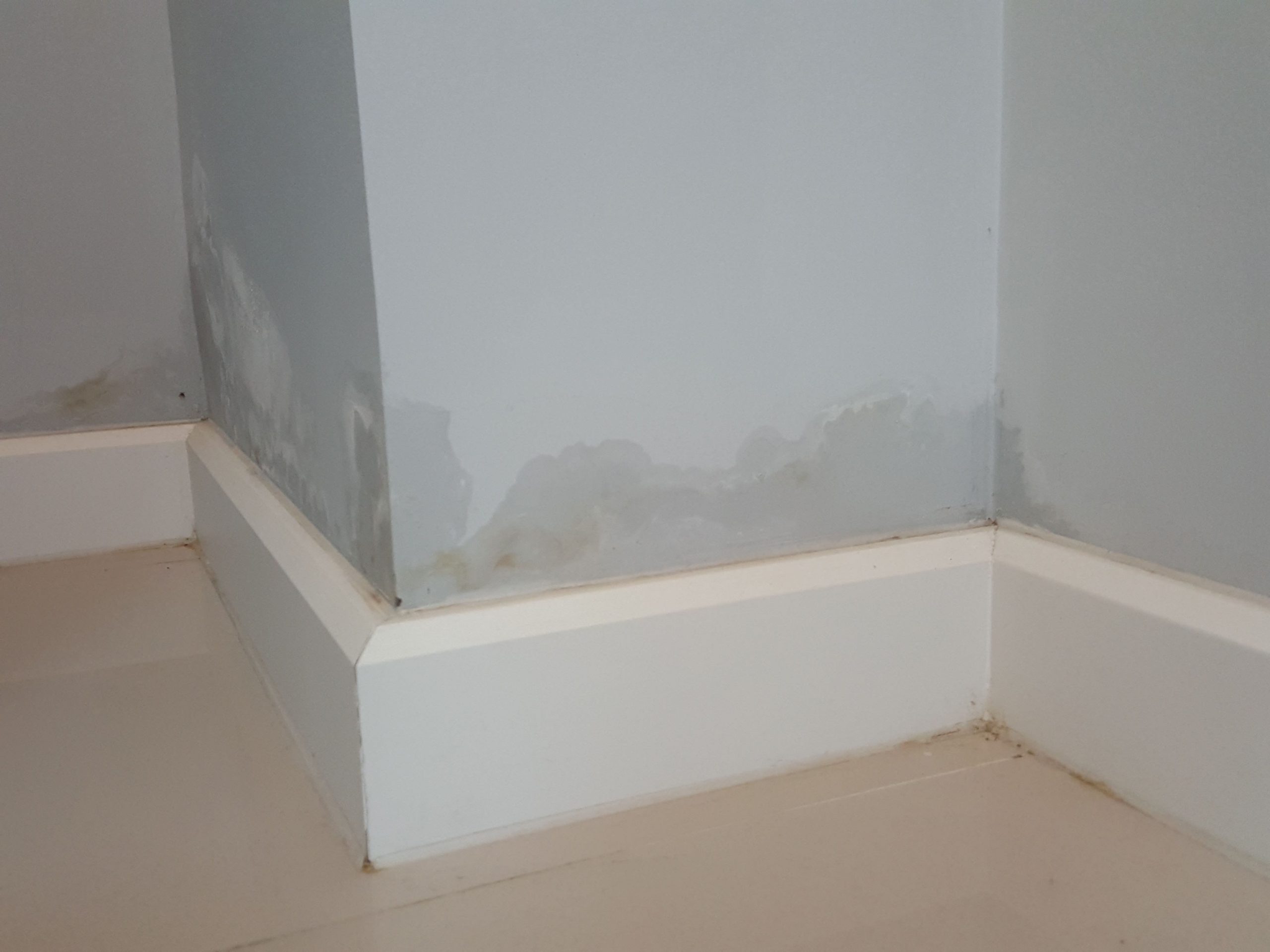Blog
Penetrating Damp vs Rising Damp

There are three main types of damp most homeowners will encounter at some stage: condensation, penetrating damp, and rising damp. Condensation is easy to identify and it’s also easy to prevent and treat, but penetrating and rising damp are a bit more complex, and to make matters more complicated, many people often confuse the two.
To help you differentiate between these two types of damp and effectively protect your home against them, we’ve put together this handy guide explaining the key differences between them, as well as the basics of each type.
What is Penetrating Damp?
Firstly, let’s look at penetrating damp. There are two types: normal penetrating damp and lateral penetrating damp. Normal penetrating damp is typically caused by defective guttering, roofing, brickwork, or doors/windows. Lateral penetrating damp is typically caused by a missing, defective, or bridged DPC (damp proof course), or high soil levels.
Penetrating Damp Signs
Penetrating damp can occur anywhere on your walls and ceilings and is characterised by wet patches on either the inside or outside of your walls. Stains and salt deposits may also occur, as well as blistering and/or flaking plater/paint/wallpaper.
How to Get Rid of Penetrating Damp
If your property is suffering from penetrating damp, there are a number of solutions that may help to remedy the problem depending on the root cause. If the issue is with your roof tiles, you will need to replace and/or repair the affected tiles. The same goes for guttering and downpipes, as well as defective rendering/brickwork, and windows or doors.
Brickwork, plaster, and sealing may need to be stripped and replaced, as well as any skirting boards or subfloor timbers that have been impacted by the excess damp. Garratt’s Damp and Timber are experts in treating penetrating damp. If you think your home is suffering from penetrating damp at ground floor level or below, please call us on 0208 535 7536 to arrange a site survey. When we carry out the survey, we will provide you with a no-obligation quote. The price we quote will depend on the severity of the issue and the level of the remedial works required.
How to Prevent Penetrating Damp
The key to preventing penetrating damp and the associated damage it causes is to make an effort to maintain your home’s exterior. This involves regularly inspecting the roof, brickwork/render, guttering and downpipes, and ensuring there are no raised soil levels surrounding the walls of your property.
What is Rising Damp?
Rising damp is a ground floor or lower ground floor issue and is usually caused by a defective, missing, or bridged DPC, but one of the other main rising damp causes is a lack of or ineffective basement tanking. Generally speaking, it occurs when excess groundwater makes its way onto your walls, and it can present itself on internal or external walls. Due to the force of gravity, rising damp will not go above one metre, or 1.5 metres at an absolute push.
Rising Damp Signs
Rising damp is characterised by salt deposits on the wall, rusty nails within skirting boards and/or decaying skirting boards, as well as aesthetic damage to plaster, paint, and wallpaper.
How to Get Rid of Rising Damp
There are two main rising damp solutions: fixing, replacing or installing a new DPC, and undertaking basement tanking. Both of these will need to be carried out by a trusted damp proof specialist like Garratt’s Damp and Timber. We are experts in treating rising damp. When we carry out a site survey we will give you a no-obligation quote that reflects the extent of the problem and the required remedial works to fix it.
How to Stop Rising Damp
You might not always be able to stop rising damp, especially if you’ve just moved into an older house. There’s a chance that by the time you move in, the DPC (if there was one) is already decaying, or that the basement has never been tanked. That being said, it’s good practice to get the Garratt’s Damp and Timber team to come and carry out a site survey in order to establish the state of the DPC and/or the basement. You will also need to replace your DPC every 20-30 years to ensure it’s in the best working order.
Summary of Key Differences
Now you know everything about rising and penetrating damp, let’s look at the key differences between the two.
Appearance:
- Penetrating damp can present itself anywhere on your walls and ceilings, whereas rising damp can only be found from ground level up to 1.5 metres on the walls.
Causes:
- Penetrating damp is caused by defective roofing, guttering, rendering/brickwork, or doors/windows, whereas rising damp is caused by a defective, bridged, or absent DPC, or a lack of basement tanking.
Remedies:
- Penetrating damp can be remedied by repairing or replacing external aspects of your home, whereas rising damp can be remedied by keeping on top of your DPC and removing abutting items from against your external walls.
Prevention:
- Penetrating damp can be prevented by keeping on top of general exterior home maintenance, whereas rising damp can be prevented by maintaining your DPC and/or basement tanking.
Rising and Penetrating Damp Treatment Specialists
If you think your property is suffering from rising or ground floor/lower ground floor penetrating damp, contact us to arrange a site survey and to speak about your options moving forwards.
Archived Articles
Recent
-
18 Mar 2024
How to Get Rid of Damp in Bedrooms
While it may seem more logical that kitchens and bathrooms are more prone to damp, it may be surprising for…
-
13 Nov 2023
Benefits of Tanking Your Basement
While basements have been a staple of home construction in multiple countries, they are still a relatively new concept in…
-
13 Nov 2023
Taking Action on Fixing Damp
Damp is a widespread problem in properties across the UK; however, this doesn’t stop the fact that it’s a serious…







